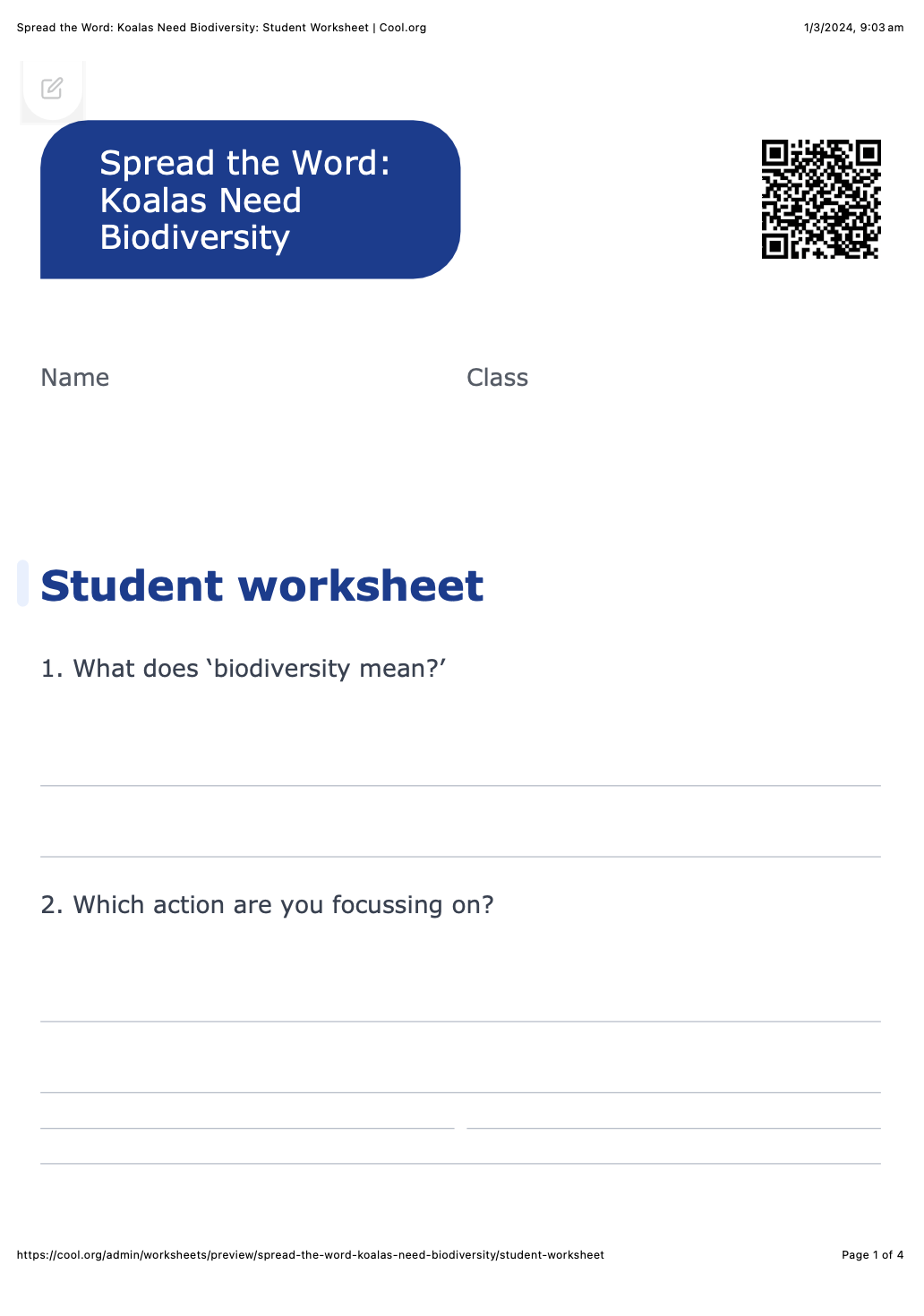Lesson summary
Students will explore how scientific knowledge is being used to identify problems, consider responses and make decisions when it comes to koala conservation. They will explore how scientists share these messages with people, and then craft their own message to promote koala survival.
Learning intentions:
Students will...
- explore how biodiversity impacts the habitat of koalas
- create a conservation message to support the recovery of koalas.
Success criteria:
Students can...
- begin to explain the interdependence of animals and plants to survive
- use scientific knowledge to create a conservation message.
Lesson guides and printables
Curriculum links
Select your curriculum from the options below.
Lesson details
Skills
This lesson is designed to build students’ competencies in the following skills:
- critical thinking
- global citizenship
- problem-solving
Curriculum Mapping
Australian Curriculum (v9.0) content description:
Year 6 Biological Sciences:
- investigate the physical conditions of a habitat and analyse how the growth and survival of living things is affected by changing physical conditions (AC9S6U01)
- investigate how scientific knowledge is used by individuals and communities to identify problems, consider responses and make decisions (AC9S6H02)
Relevant parts of Year 6 achievement standards: Students can explain how changes in physical conditions affect living things and can describe how individuals and communities use scientific knowledge.
NSW Syllabus outcomes: ST3-4LW-S
General capabilities: Critical and Creative Thinking
Cross-curriculum priority: Sustainability
UN Sustainable Development Goals
UN SDG 15: Protect, restore and promote sustainable use of terrestrial ecosystems, sustainably manage forests, combat desertification, and halt and reverse land degradation and halt biodiversity loss
- Target 15.5: Take urgent and significant action to reduce the degradation of natural habitats, halt the loss of biodiversity and, by 2020, protect and prevent the extinction of threatened species.
Resources Required
- Device to share media with students
- Student devices - 1 per group for research
- Student worksheet - 1 per student
Additional Info
This lesson has been created in partnership with WWF-Australia and made possible thanks to its proud supporter, Australia Post.
In 2022, koalas on Australia’s east coast were officially listed as an endangered species after dramatic population decline. Habitat destruction, climate change and extreme weather events, including bushfires and floods, have had a significant impact on koalas.
As one of Australia’s most trusted conservation organisations, WWF is working tirelessly to turn this tragedy around, with Australia Post joining them in their mission to double koala numbers across eastern Australia by 2050.
Level of teacher scaffolding: High - direct instruction and facilitating student research.
Related Professional Learning
Meet the NQS by Caring for the Environment
Education and care settings are places where children learn about self, others and the world. National Quality Standard (NQS) Element 3.2.3 requires every early childhood service to care for the environment and support children to become environmentally responsible.



Welcome back!
Don't have an account yet?
Log in with:
Create your free Cool.org account.
Many of our resources are free, with an option to upgrade to Cool+ for premium content.
Already have an account?
Sign up with:
By signing up you accept Cool.org's Terms and Conditions(Opens in new tab) and Privacy Policy(Opens in new tab).